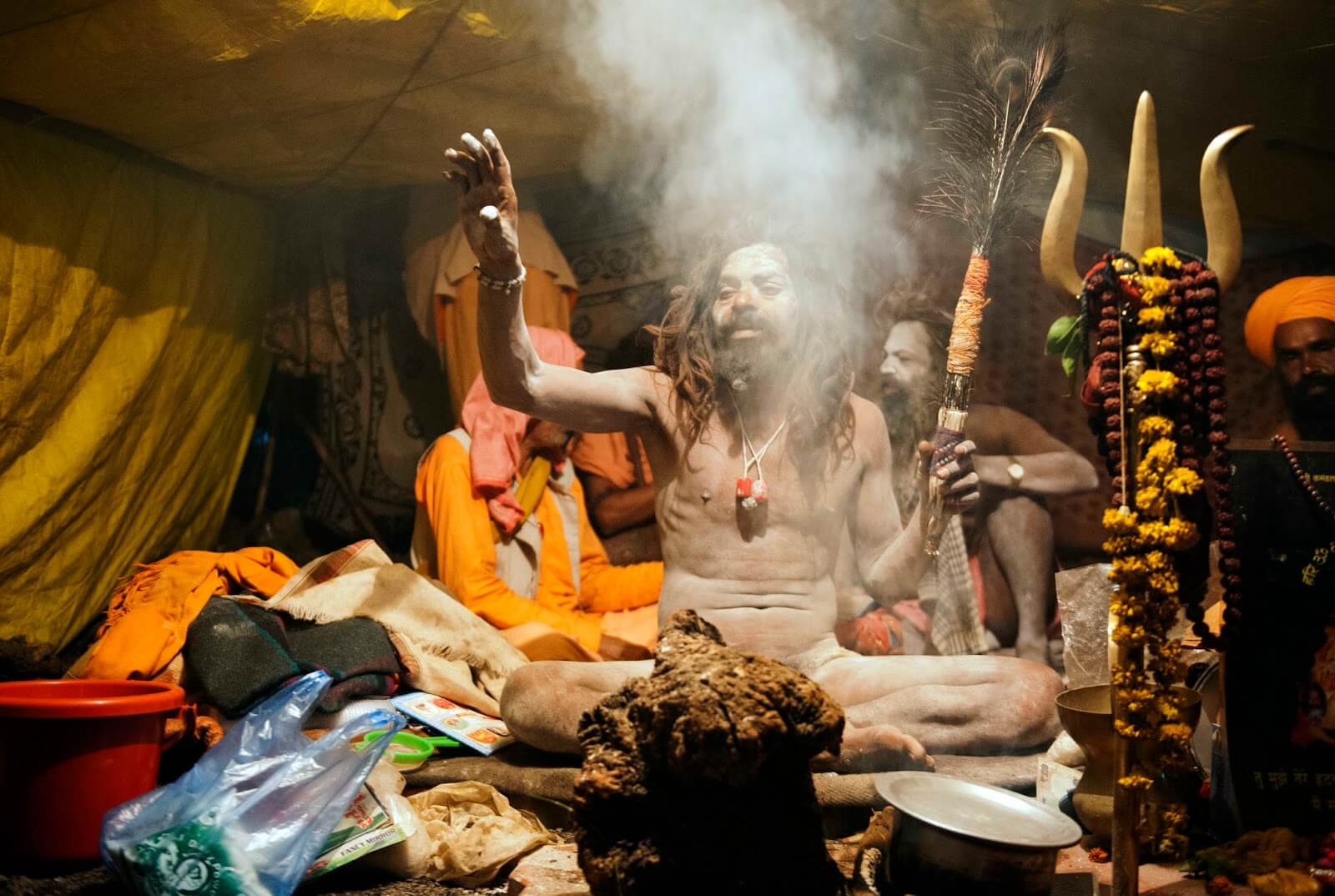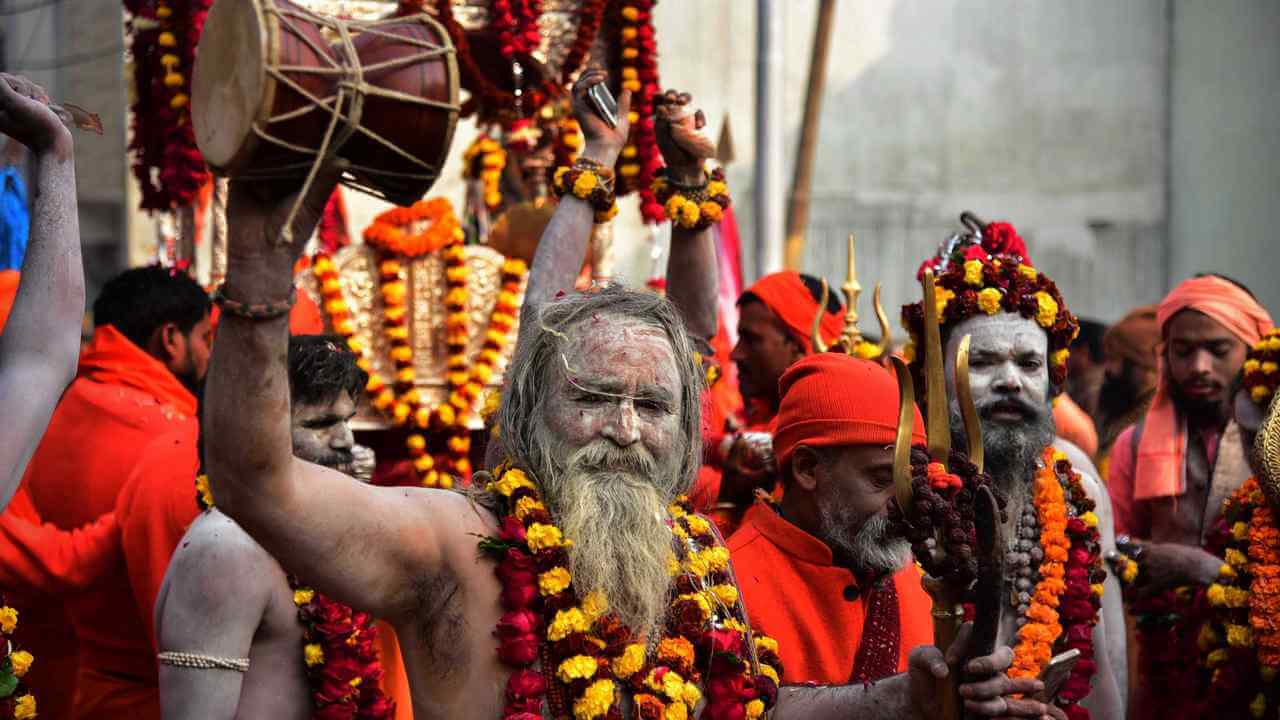In December 2017, The UNESCO recognized the Kumbh Mela as the Intangible Cultural Heritage of Humanity. Kumbh Mela is one of India’s most celebrated congregation where thousands and hundreds of people gather for the holy purpose.
The 55-day long Kumbh Mela commenced with the Shahi Snan of Akharas at Prayagraj in Uttar Pradesh on January 15 on Makar Sankranti, one of the most auspicious day in the Hindu calendar. Spread over an area of 45 km, the event has food courts, a tent city and many other attractions. walking to make their way to the Sangam for a ritual dip in the waters, people line up along the Sangam for a purifying dip, with a belief that taking a dip in the holy water of Ganges River will pave the way for their salvation and would rid them of their sins. With over 130 million pilgrims expected to participate in the festival, the Uttar Pradesh government ordered the shutdown of tanneries in the cities of Kanpur and Unnao from December 15 to March 15 for clean water in the holy river of the Ganges during the Kumbh festival. The authorities have even deployed more than one lakh cleaning agents, called as Swachhagrahis, to maintain the hygiene of the festival.
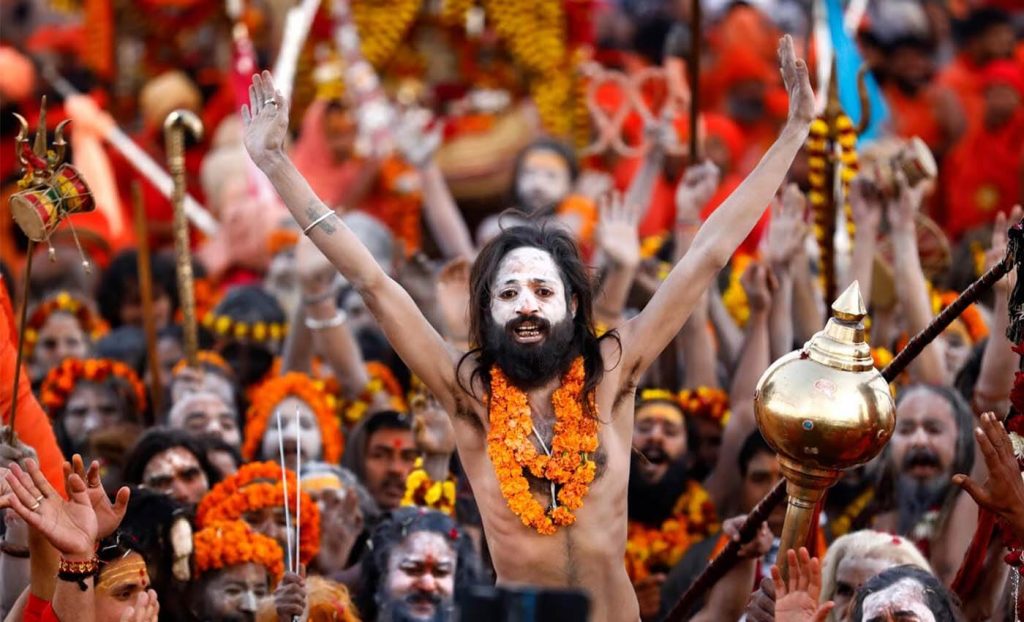
An area of 20 lakh sq.ft area, has been designated in Prayagraj for the street art projects under an initiative by Kumbh Mela Authority called ‘paint my city’, thus the streets have become a canvas for artists as many murals with various themes are being painted. Like this other attraction for the tourists are the sadhus who are known as Nagas, naked men with ash smeared on their body and long dreadlocks.
Not just the Nagas but there are other iconic sadhus in different attires catching the eyes of the devotees, especially the foreign tourists, which has only made the religious event much more attractive and unique.
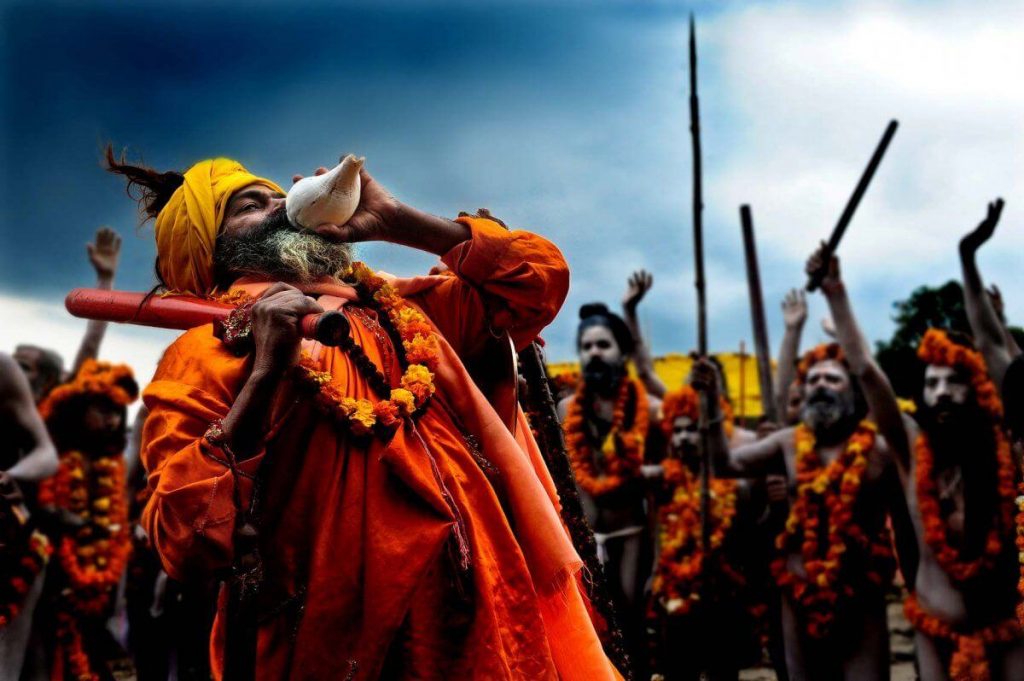
One of the sadhus known as Mahant Shakti Giri of the Juna akhada, sat with his mighty head gear and flashy sunglasses carrying 70-kg weight on his body, including his crown and hundreds of ‘rudrakhsh mala’. Famously known as ‘rudrakhsha waale baba’, said, ‘The crown which I am wearing weighs more than 22 kg and the other 48 kg is due to hundreds of rudhray seed chains on my body. This time the Kumbh is unique and more elaborate arrangements have been made for everyone.’ Another baba had a new way of attracting people, with a pegion in his hand, the ‘kabutar baba’ attracted many tourists and bhaktas together.
The Kumb mela also attracts many outsiders from across the world, some who are so familiar with the rituals that they come as one of the bhaktas in traditional attires. Many foreigners had come to the akhadas for connection with seers and other people in the mela.
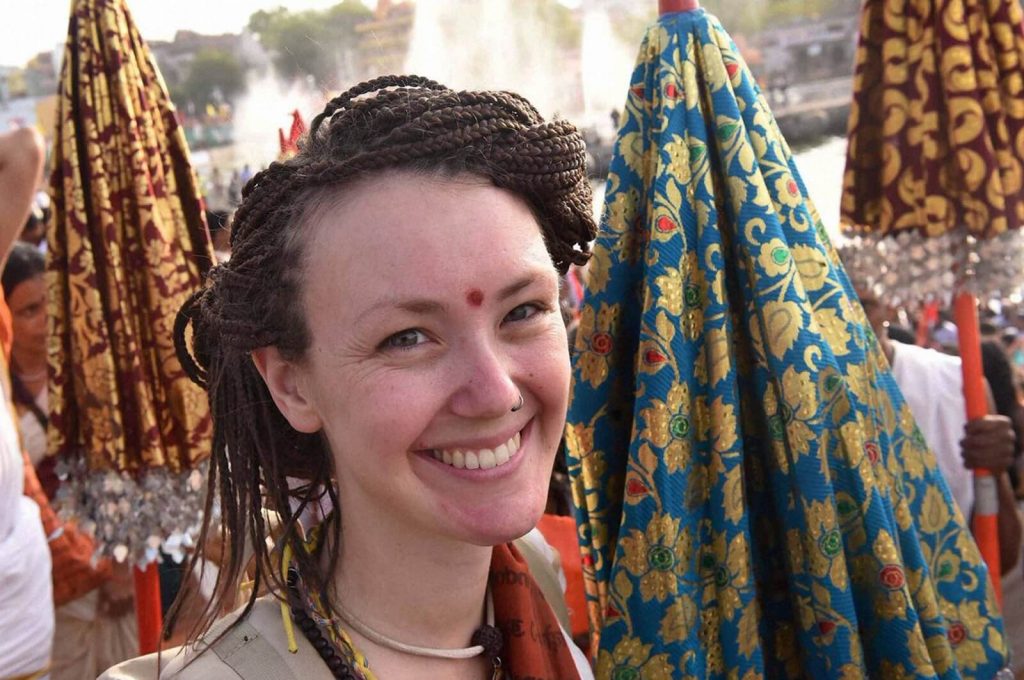
Geanopierre from Paris, believes that no other gathering can become such a strong message of faith. Visiting for the second time, he is known as Hari Pyare in India. ‘I have been learning Yoga in Rishikesh for past six months and people there call me ‘Hari Pyare’. I attended the last Maha Kumbh as well.’ Talking about the different attires and shows put on by the sadhus at the Kumbh Mela, Geanopierre added, ‘The atmosphere here is incredible and the sadhus in different attires are definitely stealing the show.’
This year Kinnar Akhada’s debut in the Kumbh Mela became headlines across the country, as a tantrik puja was performed in Prayagraj of Uttar Pradesh in support of the construction of Ram Temple in Ayodhya. Tantriks came from Karnataka and Tamil Nadu specially to perform the puja so that the temple could be built soon.
The Kumbh Mela will see the closing on Maha Shivratri, that is on March 4.




